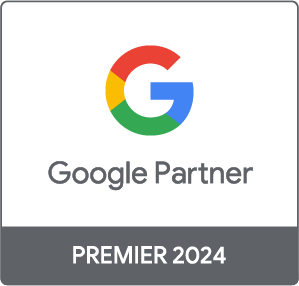An in-depth guide to improving your Quality Score

You probably already know what Quality Score is. A scoring system found within Google Ads, but it’s not always immediately clear what goes into calculating it. There’s much more to the equation to understand to unlock improved PPC ad performance.
Quality Score measures the quality and relevance of keywords, ads and landing pages, from the perspective of a user searching online. Good management of Quality Scores can lead to better ad positioning and lower advertising costs overall.
Let’s go into the details so that by the end of this article, you’ll be all set up to improve Quality Scores across your campaigns. Let’s get started.
- How Quality Score works
- Quality Score at different levels
- Quality Score mistakes to avoid
- How to improve Quality Score
How Quality Score works
Quality Score is just one of the top PPC metrics to monitor and there are several key components that go into calculating Quality Score, here’s a rundown in order of relevance. Remember, the best campaigns will address each of these areas, not just one or two, so take your time to refine the details of your existing campaigns.
1. Click through rate (CTR)
CTR is one of the most critical factors in calculating Quality Score. If you have a higher CTR, Google Ads could perceive your campaign as being more relevant (providing you have the right keywords in the mix). This leads nicely to an increased Quality Score.
2. Ad relevance
You need to ensure your ad copy is specific to the keywords of each campaign and ad group. This helps increase the relevance and targeting of the campaign overall, allowing you to be highly specific and focused with each campaign.
3. Landing page experience
Relevancy should extend to your landing page. Are the keywords and ad copy in your campaigns actually matching your landing page?
Aside from keywords, take a moment to consider the performance of the site and individual pages. Loading times need to be speedy, mobile device adaptability should be considered in the design and all content on each page should deliver based on user intent.
4. Ad format & extensions
Using extensions and being specific and intentional with your ad formats can increase the relevance of your ads, which in turn can have a positive impact on your Quality Score.
5. Historical performance
Google likes to snoop on your previous ad performance and take a look at your keywords. Consistent, high performance over a long period of time can improve your Quality Score. This is a step that takes time, but if you make adjustments today, you’ll be seeing results in a matter of weeks.
6. Device and geographic performance
Quality Score can vary depending on what devices users are searching and interacting with your ads on. Optimise for each device for your best opportunity to increase your score.
Quality Score at different levels
Of course, Quality Scores aren’t just on campaign levels. Let’s take a look at the various levels where scores are calculated, and what to be mindful of.
- Account level Quality Score: This is an overall score of your entire Google ads account. It takes the historical performance of all ads and keywords into account, looking at aspects like Ad relevance and CTR.
- Ad group level: Here, the relevance of your ads within each ad group are considered. If you've got a higher Quality Score, this means your ads are closely related to any keywords within that ad group. As ever, relevance helps boost that score!
- Keyword level: The calculations for these very specific, individual Quality Scores are primarily influenced by historical CTR data, but also take ad relevance and landing page experience into consideration. Here, the keyword match types can really change a keyword’s score. Unsurprisingly, exact match keywords do well as they are specific, and therefore more likely to be highly relevant.
- Landing page level: This is quite a busy score to calculate. Content relevance, load time and performance on mobile devices are all considered. Put simply; useful, efficient and relevant landing pages do well. So just check you’ve got all the basics ticked off before delving into the details and building out areas of your site.
Quality Score mistakes to avoid
Steer clear of these commonly overlooked, everyday issues to make the most of your Quality Score.

1. Overstuffing keywords
Focus on quality and relevance, and avoid overloading ad groups with heaps of keywords. There’s no need, and your campaigns will benefit from your specificity.
2. Neglecting optimising for mobile devices
Mobile devices can bring in the majority of interactions for some companies, don’t overlook this. A simple double-check along with small updates on your site on mobile devices can make all the difference.
3. Not refining ad copy, keywords, and strategy over time
Seeing as Quality Score is often largely based on historical performance, you need to have patience when making changes. Adjust and adapt gradually, to encourage updates to Quality Scores across your account.
How to improve Quality Score
1. Click-through-rate is king
Improve your CTR over ad group and keyword levels to spruce up your campaigns’ score overall.

2. Make the most of your ad copy
Create engaging titles for ads that are highly relevant to the keywords of the ad group and campaign. In a nutshell, keep everything relevant and specific, there’s no need to overcomplicate.
3. Negative keywords are your friend
Prevent your ad from showing up for searches that just don’t match what you’re offering. This cuts out interactions from searches that aren’t relevant, which can improve Quality Score over time.
4. Take care of your landing page
Get out of Google Ads for a minute and check on the landing page user experience. See if the copy on each page can be updated, or if the page loading time can be improved.
Summary of Quality Score
Careful management of Quality Scores can save you money and improve your ad positioning online. If you take time to review the scores at various levels of your account, from keyword to campaign, you’ll ultimately increase the relevance of your digital advertising.
This is not only a great boost for your budget and conversion rates, it also simplifies the shopping process for any user online, leading to a better experience for your next customers. Give some of these tips a try and see how quickly you can get results.
If you need more help, we’re here for that. Get in touch with our specialist paid search team for a chat.








